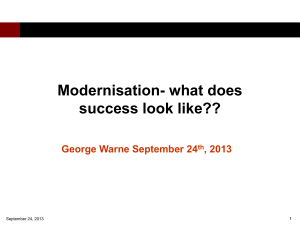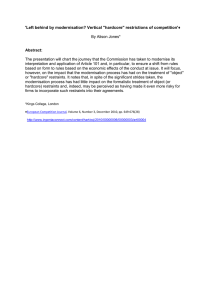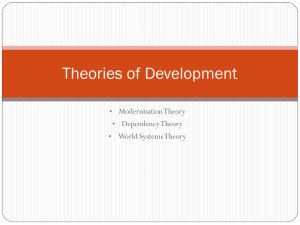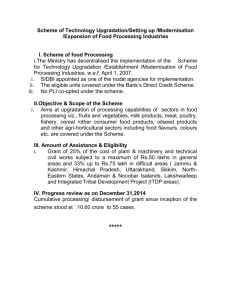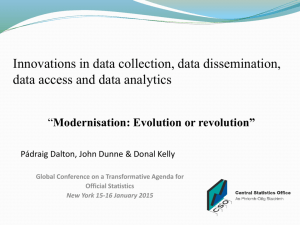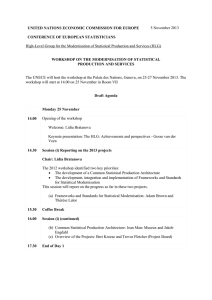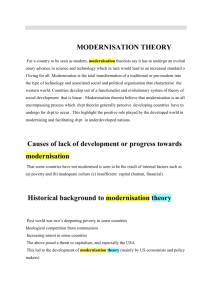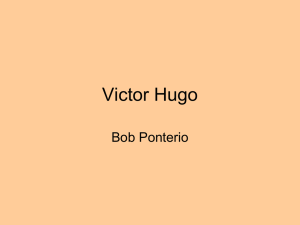Lecture-1
advertisement
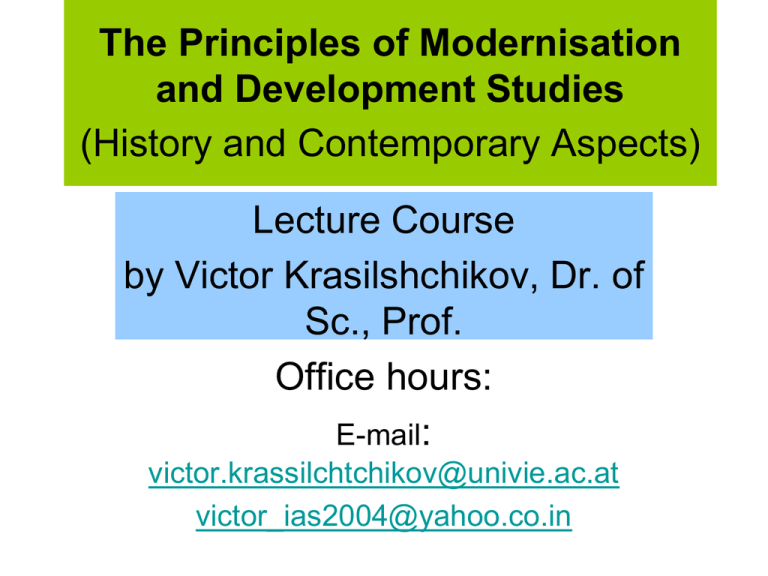
The Principles of Modernisation and Development Studies (History and Contemporary Aspects) Lecture Course by Victor Krasilshchikov, Dr. of Sc., Prof. Office hours: E-mail: victor.krassilchtchikov@univie.ac.at victor_ias2004@yahoo.co.in Lectures 1-2. • Modernisations in Human History. The Historical Echelons of Modernisation and the Capitalist Development What is modernisation? • “…modernization is like the elephant, difficult to define but easy to recognize when one sees the beast.” • (Goh Keng Swee. The Economics of Modernization. Singapore: Federal Publications, 1995 (1-st. ed. – 1972), p. 1). Great formations of society • - Primary • - Secondary (economic formation of society) • - Tertiary (posteconomic formation) • - Based upon gathering and hunting • - Based upon labour • - Based upon intellectual, creative activity Gap between East and West Population, mln. people, 1500 - 2001 7000,00 6000,00 5000,00 4000,00 3000,00 2000,00 1000,00 0,00 1500 1700 1820 Western Europe 1913 China 1950 India 2001 World Gap between East and West GDP per capita, US$ 1990, 1500 - 1820 - 1913 4000 3500 3000 2500 2000 1500 1000 500 0 Western Europe China India World (average) 1 2 3 771 600 550 566 1204 600 533 667 3458 552 673 1525 Western Europe China India World (average) Gap between East and West GDP per capita, US$ of 1990, 1913 - 1950- 2001 25000 20000 15000 10000 5000 0 1 2 3 Western Europe 3458 4579 19256 China 552 439 3583 India 673 619 1957 World (average) 1525 2111 6049 Western Europe China India World (average) Routes to/through Modernity (according to Göran Therborn) • - “The West European route” • - Transcontinental migration and genocide of the local population (both Americas, Australia, New Zealand) • - Influence of the West on non-western societies through demonstration effect • - Through colonisation Jean-Antoine de Condorcet • «La marche de ces peuples (les peuples de l’Asie et de l’Afrique – V.K.) serait plus prompte et plus sûre que la notre, parce qu’ils recevraient de nous ce que nous avons été obligés de découvrir, et que, pour connaître ces vérités simples, ces méthodes certaines auxquelles nous ne sommes parvenues qu’après de longues erreurs, il leur suffirait d’en avoir pu saisir les développements et les preuves dans nos discours et dans nos livres.» • The march of these peoples (peoples of Asia and Africa – V.K.) would be prompter and surer than ours because they would receive from us what we were obliged to discover and what, for knowing simple truths, we had to conceive by methods of errors and probes. They could learn all that from our discourse and our books. Resistance to Modernisation (Rudyard Kipling. “The White Man’s Burden”) • Take up the White Man’s burden – • The savage wars of peace– • Fill full the mouth of Famine • And bid the sickness cease; • And when your goal is nearest • The end for others sought, • Watch Sloth and heathen Folly • Bring all hope to nought. • Take up the White Man’s burden – • No tawdry rule of kings, • But toil of serf and sweeper – • The tale of common things. • The ports ye shall not enter, • The roads ye shall not tread, Go make them with your living, • And mark them with your dead. The social-technological types (stages) of modernisation • • • • - pre-industrial (XV c. – the 1770-80s) - early-industrial (1770s-80s – 1900s) - late-industrial (1913 – 1973) - post-industrial (the end of the 1960s and onwards) Stages of modernisation and big cycles Types of modernisation Earlyindustrial Lateindustrial Postindustrial Big cycles and their phases Dominating industries 1 – A: 1780s – 1814 – B: 1815-1847 Light industry, consumer goods 2 – A: 1848 – 1872 – B: 1873 – 1895 Heavy industry, coal, steel, machinery building 3 – A: 1896 – 1919 Electro-technique, an emergence of conveyor 3 – B: 1920 – 1945 The rise of automotive and aircraft industry, petroleum 4 – A: 1945 – 1968 (or 1973) – B: 1969 (or 1974) – 1991 (or 1995) Production of durable, technically complicate goods for mass consumption, the first steps of computing technique, informatics 5 – A: 1976 (?) – ? – B: ??? Informatics, communications, the boom of life sciences 6 – A: 2012 (2015) – ? Life sciences, biotechnologies, medicine
